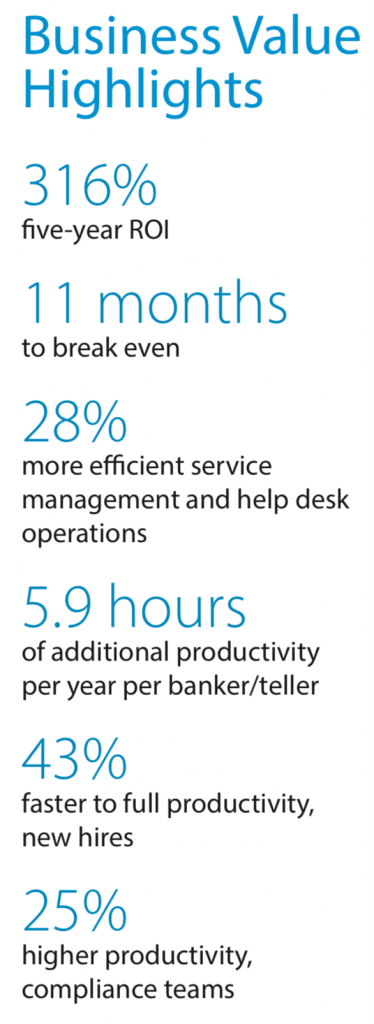White paper: The business value of ServiceNow for retail banks
Banks typically approach transformation in part by reengineering their own internal business, IT, and operational processes either in ad hoc ways tied to direct response to some tactical problem or over longer time frames based on carefully planned out strategic planning.
Recently, however, this transformational process has taken on a new urgency, and certain projects that were targeted to take a year or two have needed to be accelerated to meet our rapidly changing banking environment. Even the need to respond to today’s tactical challenges needs to be viewed through the long lens of transformation.
As banks begin their process of recovery, projects that provide immediate return on investment (ROI) and help develop resilient operations, improve customer experiences, or improve compliance through improved service management will become critical to how quickly banks can recover from periods of economic disruptions, now and in the future.
In this context, IDC spoke with a number of retail banks about their use of ServiceNow as a service management platform for their business operations. Interviewed organisations reported achieving significant value with ServiceNow by providing and delivering services to their lines of business more efficiently, cost effectively, and robustly.
Beyond enabling their IT organisations to better support business operations, interviewed retail banks also linked gains in productivity and effectiveness for bankers and regulatory teams to automated processes and smooth information flow attributable to ServiceNow.
Overall, IDC puts the value interviewed retail banks will achieve at an annual average of $29.54 million per organisation ($70,000 per 100 users) by:
- Enabling more effective service management capabilities, including faster identification and resolution of incidents and problems and more seamless change management activities.
- Supporting core bank employees such as bankers and tellers with robust IT services, allowing them to work more effectively, thereby increasing productivity levels.
- Generating efficiencies for service management teams, enabling these teams to handle increased workload volumes and perform more effectively in support of business operations.
- Providing regulatory compliance teams with timely and accurate data and information, thereby reducing compliance-related risk and boosting these teams’ effectiveness.












































